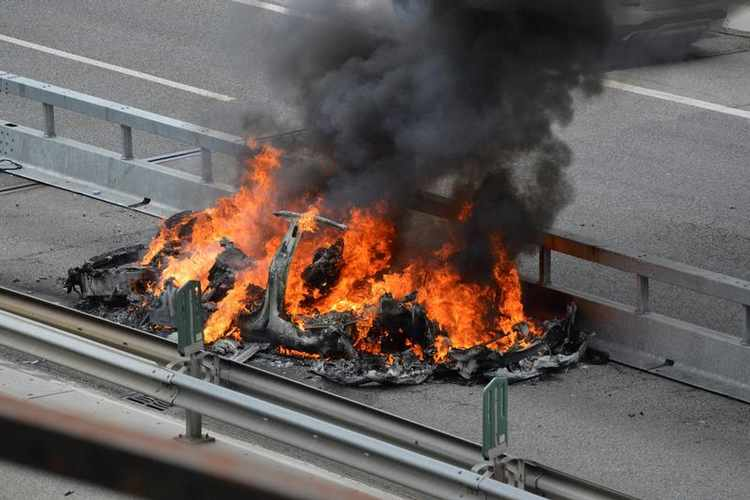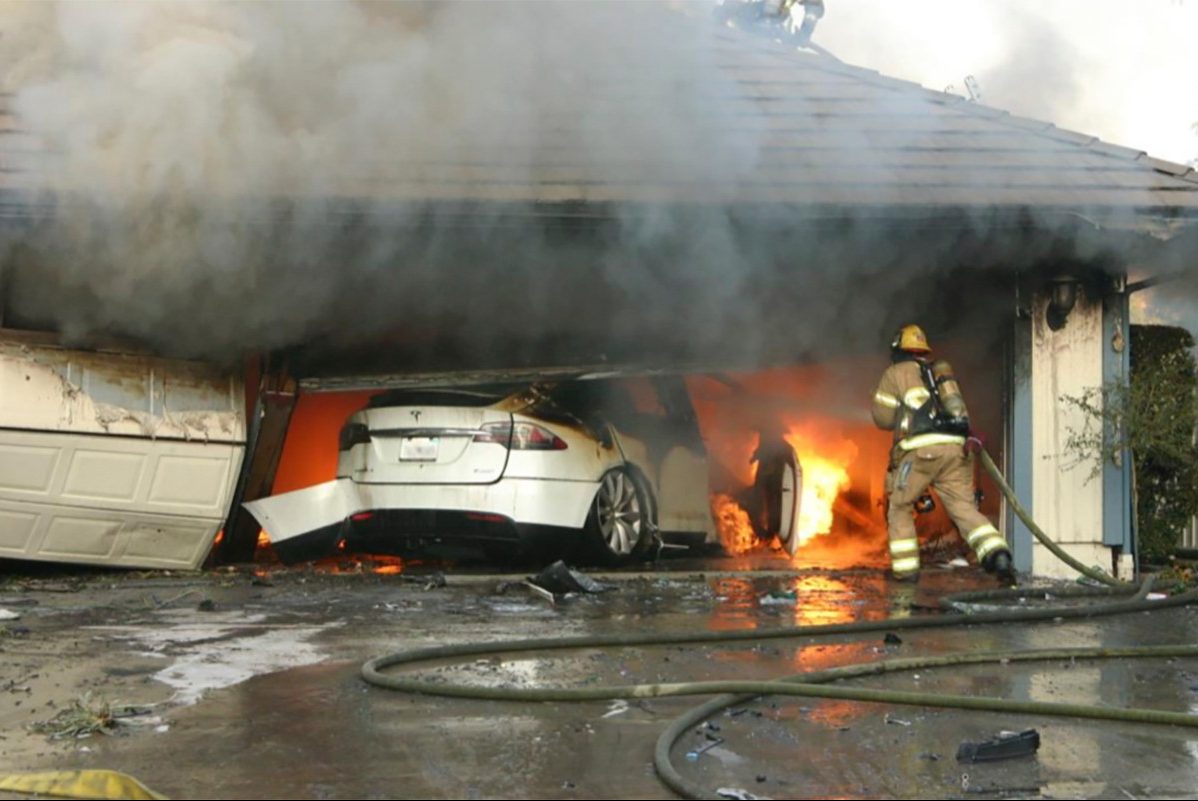"While charging the battery" Kona electric car fires again in Namyangju
Image 1

Recently, an incident involving a Kona electric car catching fire while charging the battery has once again raised concerns about the safety of electric vehicles. The incident occurred in Namyangju, South Korea, adding to the growing number of such incidents that have been reported worldwide.
Electric Vehicle (EV) fires have become a topic of increasing concern in recent years, with numerous reports of EVs catching fire during different scenarios, including charging, driving, and even while parked. As the popularity of electric cars continues to rise, understanding the reasons behind these fires and finding solutions to prevent them becomes crucial.
One of the main challenges associated with electric vehicle fires is that they pose a unique hazard due to the nature of their power source. Unlike traditional internal combustion engine vehicles, EVs rely on large lithium-ion batteries to store and release electrical energy. While these batteries provide many advantages, such as improved efficiency and reduced emissions, they also come with inherent risks.
Image 2

In another recent incident, a Chevy Bolt caught fire in a driveway. This incident highlights the importance of addressing the safety concerns associated with electric vehicles across different brands and models. EV fires can occur regardless of the specific make or model, emphasizing the need for industry-wide attention and collaboration to ensure the safety of electric vehicles.
The causes of EV fires can vary, but they often involve issues with the battery pack, charging equipment, or even manufacturing defects. In some cases, EV fires have been attributed to thermal runaway, a phenomenon where the heat generated in the battery exceeds its ability to dissipate it, leading to an uncontrolled release of energy and potential ignition.
To mitigate the risk of EV fires, automakers have implemented various safety measures. These include advanced battery management systems, thermal management systems, and rigorous testing and quality control processes. However, despite these efforts, incidents continue to occur, highlighting the need for ongoing research and technological advancements to further enhance the safety of electric vehicles.
Image 3

Understanding the unique hazards associated with electric car fires is crucial for both automakers and consumers. Unlike traditional combustion engine fires, which can typically be extinguished with water or foam, electric vehicle fires pose additional challenges due to the presence of high-voltage electrical systems and lithium-ion battery packs.
When an electric car catches fire, the primary concern is not only extinguishing the flames but also preventing the spread of toxic fumes and addressing potential electrical hazards. Firefighters and emergency responders receive specialized training to handle these situations safely and effectively.
Moreover, EV fires can have severe consequences beyond the immediate safety risks. Electric vehicle fires can lead to extensive property damage, including complete destruction of the vehicle and potentially causing surrounding structures to catch fire as well. Additionally, the environmental impact of EV fires should not be overlooked, as the extinguishing agents used to fight the fires can contaminate soil, water sources, and air quality.
Image 4

While electric vehicle fires represent a significant safety concern, they also present an opportunity for automakers to further innovate and improve the safety standards of their electric vehicles. By addressing the root causes of EV fires and implementing enhanced safety features, automakers can instill greater confidence in consumers and drive the widespread adoption of electric vehicles.
It is important to note that incidents of EV fires are relatively rare compared to the total number of electric vehicles on the road. However, any incident involving a fire can have a profound impact on public perception and confidence in electric vehicles. Therefore, a proactive approach that involves continuous monitoring, analysis, and improvement of safety standards is essential.
Image 5

One example of the devastating consequences of an electric car fire is the case of a Smart ForTwo electric car that was completely destroyed by flames. This incident serves as a reminder of the importance of taking adequate safety precautions when it comes to electric vehicles.
Both automakers and regulatory bodies play pivotal roles in ensuring the safety of electric vehicles. Automakers must prioritize safety during the design, manufacturing, and testing phases of electric vehicles. This includes developing robust battery management systems, conducting thorough safety assessments, and addressing any identified risks promptly.
Regulatory bodies, on the other hand, have the responsibility to establish and enforce safety standards that govern the production and operation of electric vehicles. Continuous collaboration between automakers, regulators, and other stakeholders is vital to identifying and addressing potential safety concerns associated with electric vehicles.
Image 6

Recognizing the importance of prioritizing safety, automakers have taken action to address the issue of electric vehicle fires. For instance, General Motors (GM) recently announced a recall of their Chevy Bolt EVs after numerous incidents of fires were reported. This recall demonstrates the commitment of automakers to rectify potential safety issues promptly.
Recalls serve as a means to address potential risks and improve the overall safety performance of electric vehicles. By identifying and rectifying any defects or vulnerabilities through recalls, automakers can ensure that their electric vehicles meet the highest safety standards.
Image 7

Electric vehicle fires not only pose risks to the occupants of the vehicles but also to the first responders who arrive at the scene. Firefighters and emergency personnel face unique challenges when dealing with electric car fires, such as the risk of electric shock and the potential release of hazardous materials.
Therefore, it is crucial for first responders to receive adequate training and have access to the necessary equipment to handle electric vehicle fires safely. This includes the knowledge and skills to disable high-voltage systems and identify potential hazards associated with the vehicle's batteries.
As technology continues to advance and the adoption of electric vehicles accelerates, it is imperative to prioritize the safety of both occupants and first responders. Ongoing research, collaboration, and education are essential to minimizing the risks associated with electric vehicle fires and ensuring a safer future for electric mobility.
Conclusion
Electric vehicle fires represent a critical challenge that must be addressed to ensure the widespread adoption and acceptance of electric vehicles. While incidents of EV fires are relatively rare compared to the total number of electric vehicles on the road, their consequences can be severe, affecting public perception, property, and the environment.
Automakers and regulatory bodies have a shared responsibility to continuously improve the safety standards of electric vehicles. This involves robust battery management systems, rigorous testing, and ongoing research to identify and address potential risks associated with EV fires.
The commitment from automakers to take action, such as recalls, demonstrates their dedication to ensuring the safety of their products. Collaboration between automakers, regulators, and other stakeholders is crucial to addressing the issue of electric vehicle fires effectively.
Furthermore, providing adequate training and resources for first responders is vital to safely handle electric vehicle fires and protect both the occupants and emergency personnel.
By understanding the unique hazards and challenges posed by electric vehicle fires, we can work together to create a safer future for electric mobility. Through continuous innovation and a focus on safety, electric vehicles can become a sustainable and reliable alternative to traditional combustion engine vehicles.
If you are looking for Electric Vehicle Fires: a Disaster for Automakers, but an Opportunity you've visit to the right page. We have 8 Pictures about Electric Vehicle Fires: a Disaster for Automakers, but an Opportunity like Safety Agency Claims Electric Vehicle Fires Pose Risks to First, Smart ForTwo electric car ‘totally destroyed’ and left gutted by flames and also "While charging the battery" Kona electric car fires again in Namyangju. Here you go:
Electric Vehicle Fires: A Disaster For Automakers, But An Opportunity
 batteriesnews.com
batteriesnews.com fires ev incendi elettriche automakers idtechex batterie suiza tras accidente bans speedway incendio batteriesnews comportare
EV Car Fire, Chevy Bolt Catches Fire In Driveway - YouTube
 www.youtube.com
www.youtube.com chevy
"While Charging The Battery" Kona Electric Car Fires Again In Namyangju
 www.tellerreport.com
www.tellerreport.com car electric fires battery charging while kona fire vehicle namyangju again ev
Bolt EVs Catching Fires, GM Again Recalls EVs After Numerous Fires
 www.vehiclesuggest.com
www.vehiclesuggest.com fires recall catches driveway evs parked reportedly bolts recalls insideevs fuoco elettrica prende identify recalled vehiclesuggest ignoring owners investigated 69k
Understanding Why Electric Car Fires Pose A Unique Hazard - Core77
 www.core77.com
www.core77.com car electric fires hazard understanding pose unique why core77
Car Fire Tips | What To Do When Your Electric Car Is On Fire
 www.popularmechanics.com
www.popularmechanics.com electric brock archer
Safety Agency Claims Electric Vehicle Fires Pose Risks To First
 altdriver.com
altdriver.com fires responders risks renna
Smart ForTwo Electric Car ‘totally Destroyed’ And Left Gutted By Flames
 www.thescottishsun.co.uk
www.thescottishsun.co.uk electric car fire smart charging battery after fortwo while flames gutted destroyed set drive outside left office bursts mirror
Fires ev incendi elettriche automakers idtechex batterie suiza tras accidente bans speedway incendio batteriesnews comportare. "while charging the battery" kona electric car fires again in namyangju. Fires responders risks renna
0 comments